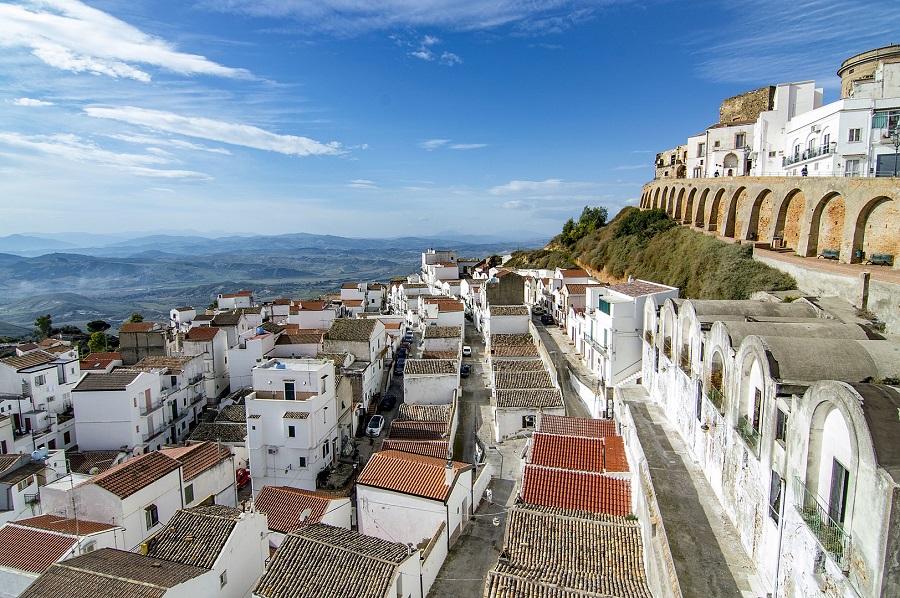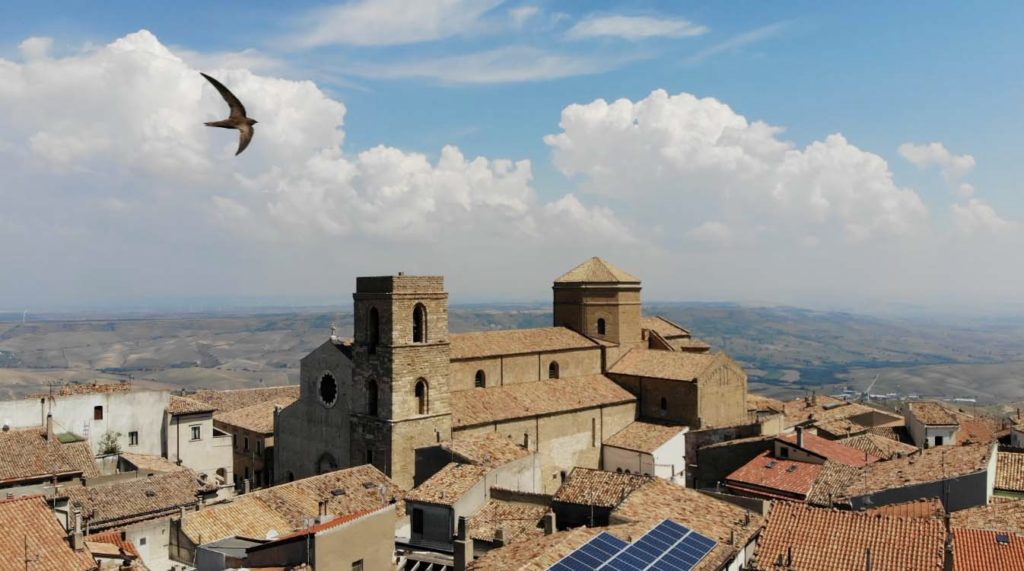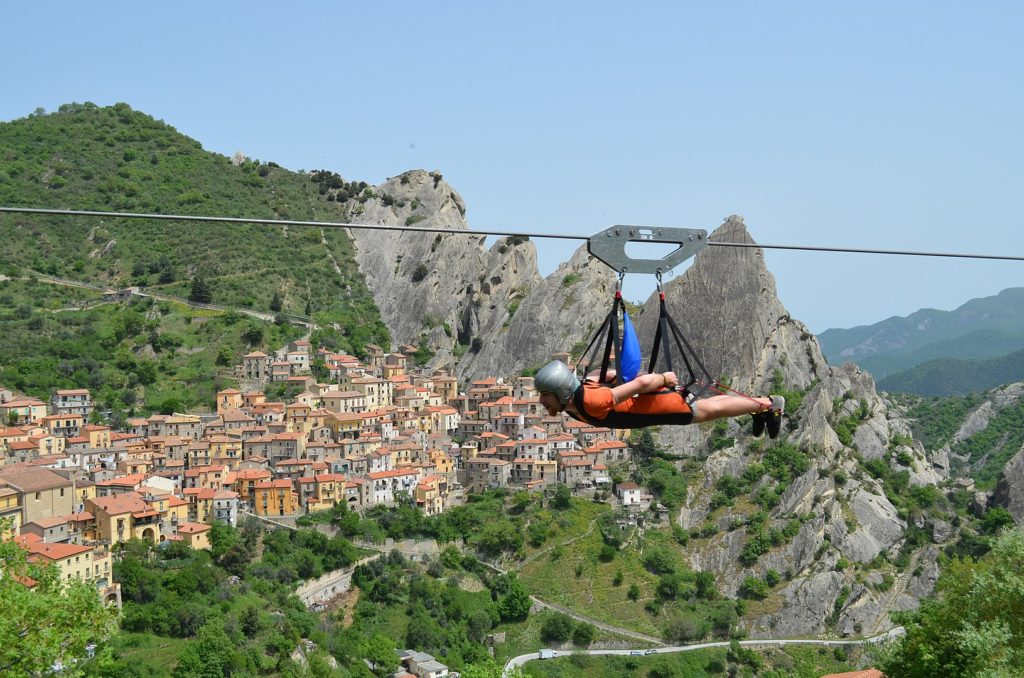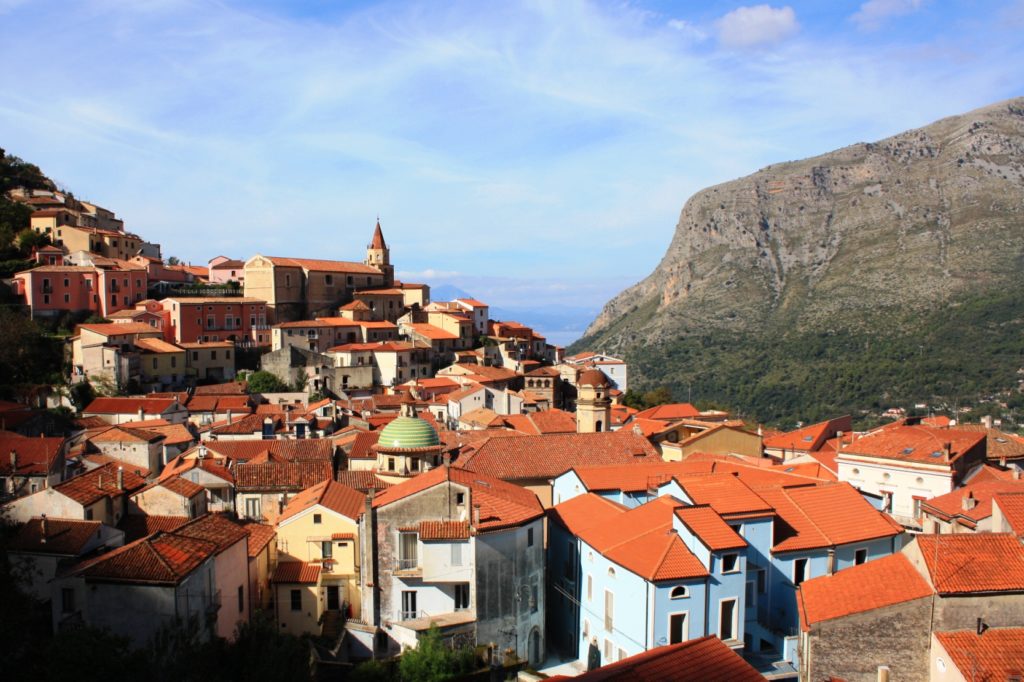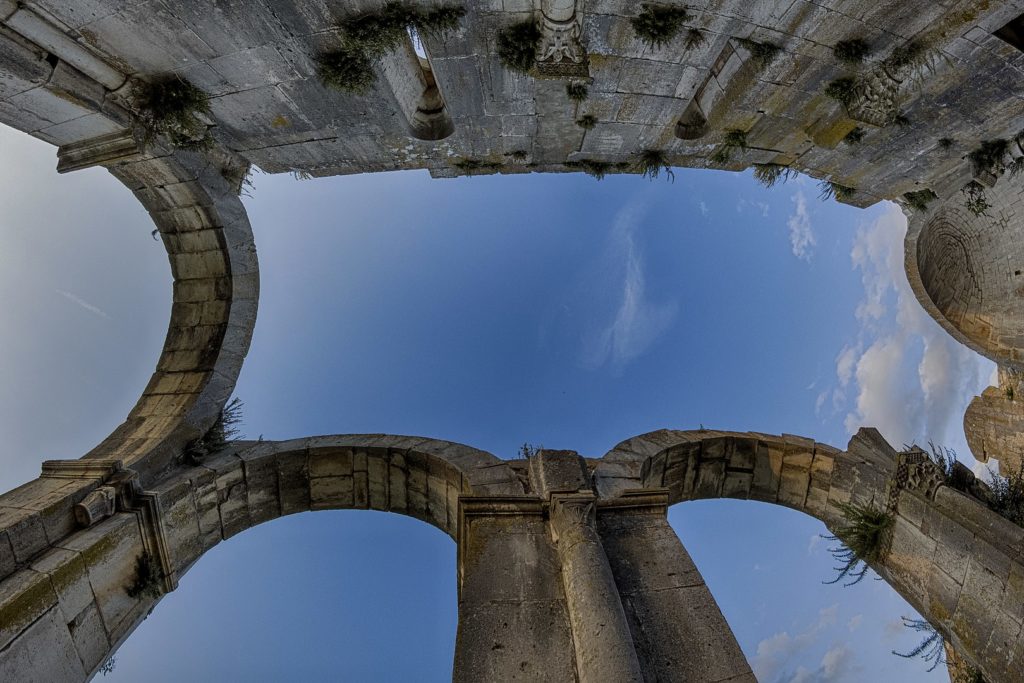Basilicata is mainly known for its UNESCO-listed city, Matera, but much more can be discovered on a road trip across its hilly landscapes. These are some of its best small towns and villages, where rural climes are paired with rich history and spectacular scenery.
Pisticci
With the Ionian Sea 30 km away, the whitewashed houses of Pisticci convey a distinctly Mediterranean feel. They form the Dirupo (Cliff) district, built after a violent landslide cut the town in half in 1688. The older district is still perched on top of the hill, Terravecchia, once buzzing with artisan workshops of which only faint traces remain. The town’s most important church is located here, featuring rich interiors and a wonderful view from its adjoining square. Local food and drinks include the famed Amaro Lucano liquor, to be had at the end of a lavish meal or mixed in cocktails.
Acerenza
An ‘eagle’s nest’ in the words of Latin poet Horace, Acerenza rests on top of a hill 800 meters above sea level. Its grand cathedral stands out from afar, an 11th-century example of Romanesque architecture which combines precious art and details with a distinctive aura of mystery. Historic palaces and polished cobbled streets grace the medieval centre, at the edges of which the view opens up to reveal the strategic importance once held by this small fortified town. Dishes such as maccaroun a desch’t (handmade macaroni) and z’zridd (a lentils and beans pasta dish) feature widely on the local menus, usually accompanied by a glass of ruby-red Aglianico wine.
Guardia Perticara
Hit hard by an earthquake in 1980, not the first one in modern history, Guardia Perticara today is consistently listed among the region’s most charming villages. Reconstruction work brought back to light the medieval structure of the settlement, which is made entirely of stone and adorned with arches, gates, courtyards and noteworthy palaces that once belonged to the local nobility. More than sightseeing, however, a visit here is about local culture and warm hospitality, which simultaneously highlight the village’s strong rural identity as it merges with modernity.
Castelmezzano
The pastel houses of Castelmezzano appear suddenly at the end of a rock tunnel, backdropped by sandstone peaks so spectacular they are known as ‘Lucanian Dolomites’. A natural fortress, this village had its heyday under Norman rule between the 11th and the 13th centuries; the ruins of the castle and a most peculiar lookout structure date back to this period. Other landmarks are scattered across the historic centre, built in harmony with the rock and brushing up against Gallipoli Cognato Natural Park, which is rich in wildlife like wolves and wildcats. Not for the faint-hearted, the ‘Angel Flight’ zip line links Castelmezzano to neighbouring Pietrapertosa, offering breathtaking views at over 400 metres from the ground (open from May to November).
Pietrapertosa
The most charming quarter of Pietrapetosa still bears the name given by early Saracen settlers, Arabata, clinging to the slopes of the Lucanian Dolomites as if aiming for the summit. The highest point is marked by an old Roman fortification-turned-castle during the Middle Ages. Its stone throne might be evocative of roaring dragons and upcoming winters, but the stunning view over the Basento Valley doesn’t require any stretch of the imagination to be enjoyed. The view is good enough a reason to overcome vertigo and have a go at the ‘Angel Flight’ towards Castelmezzano, which can otherwise be reached on foot via the scenic ‘Percorso delle Sette Pietre’ (Seven Stones Trail).
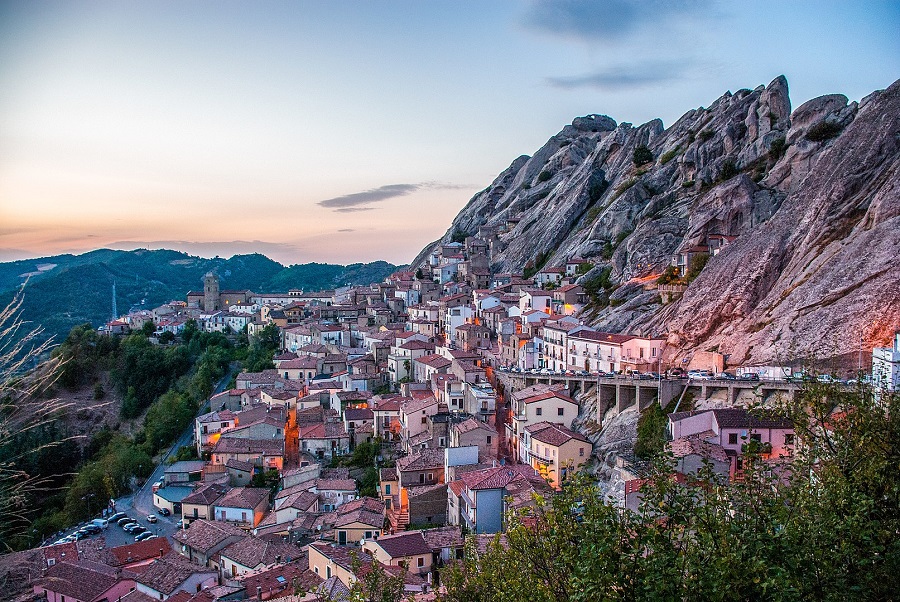
The hamlet of Pietrapertosa shielded by the Lucanian Dolomites (Photo: Lauria Carmela via Wikimedia)
Maratea
Maratea has long been one of the region’s most popular destinations, and for good reason. Its nicknames include ‘Town of the 44 Churches’ and ‘Pearl of the Thyrrenian’, which really sum it up. The hamlet melds a rich cultural heritage with the romantic atmosphere of narrow alleys and hidden piazzette. A ten-minute drive away, the Thyrrenian coast offers crystal clear water, secluded inlets and peculiar beaches such as the Jannita ‘black beach’. A statue of Christ the Redeemer overlooks the coastline from the top of Mount San Biagio, whose slopes are scattered with what remains of ancient Maratea.
Tursi
History and spirituality echo across half-crumbling stone houses in the Rabatana quarter, so named by Saracen settlers who greatly influenced the local culture. Now in ruins, the fifth-century Goth castle was once protected by cliffs and ravines which still lend an eerie tone to the surrounding landscape, best seen while walking on the historic ‘Petrizze‘ steps. A remarkable 16th-century crèche is stored inside Santa Maria Maggiore church, and other religious landmarks are the cathedral and the Franciscan monastery. A literary route dedicated to poet Albino Pierro introduces visitors to the dialect, while the extra-large ‘Staccia’ orange is one of the local staples.
Venosa
Once a milestone along the famous Appia Road, modern-day Venosa is like a history book written by all the populations who have settled here throughout the centuries. Each of them left behind visible traces, such as the Roman baths, dwellings and amphitheatre which form the archaeological park. The ‘Incompiuta’ is a most captivating unfinished church, which stands alongside an abbey showing Langobard and Norman traits. Not far from there is a complex of Christian-Jewish catacombs, while the landmarks located within the town include an Aragonese castle and ancient fountains dating back to the Angevin period. Venosa is also known as the birthplace of Latin poet Horace, and the red wine he celebrated in his verses is still a local trademark.
Irsina
Cultural heritage and protected natural areas account for the increasing tourist appeal of Irsina, also a popular destination among expats from the US, Northern Europe and New Zealand. Formerly a fortress, the robust cathedral is home to the town’s most cherished treasure: a polychrome statue of Saint Euphemia credited to Renaissance master Andrea Mantegna. Precious frescoes decorate the rupestrian crypt of Saint Francis, and guided tours also take visitors through a subterranean complex of water harvesting channels. A Hellenic krater depicting Bellerophon fighting the Chimera is one of the many memorable pieces on display at the Janora archaeological museum.
Viggianello
Flanked by the Mercure-Lao river, Viggianello marks the centre of the Pollino UNESCO Geopark. In addition to the important heritage, it is also possible to indulge in long walks among the pine trees, look out for deer, take part in sporting activities on the local waterways, go rock climbing, and trek through the idyllic scenery surrounding the source of the river. The historic centre is peculiarly formed by different hamlets placed next to each other, showing how the town expanded from the old Arab quarter Ravita. The castle and its foursquare Norman tower rise on top of the hill, while Byzantine monastic cells called ‘laure‘ are among the most notable landmarks.
